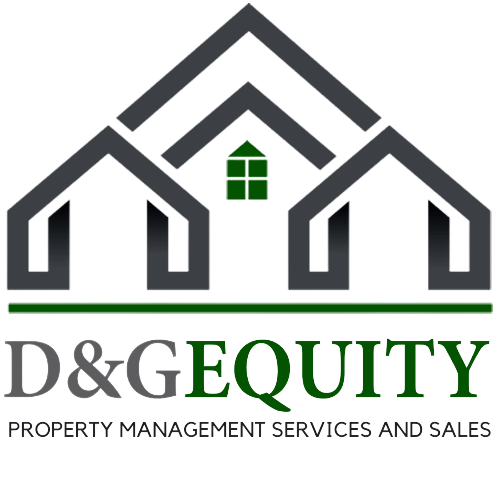
Owning rental property in picturesque Sonoma County can be a rewarding investment, but it also comes with its challenges. One of the most crucial aspects of protecting your investment is finding tenants who not only pay rent on time, but also take care of your property as if it were their own. How do you attract such tenants, and what steps can you take to ensure your property remains in top shape?
Experienced Sonoma County property managers, D & G Equity Management serves area landlords and real estate investors with furnished or unfurnished single family homes, multi-unit properties and commercial units throughout the Sonoma County area. Through the decades that we’ve been in business, we’ve helped many property owners find quality renters.
Good Property Maintenance Attracts Quality Tenants
First and foremost, the condition of your rental property is a direct reflection of the type of tenants it will attract. A well-maintained property is more likely to draw responsible tenants who appreciate and uphold its value.
Every property is different, and so are their maintenance needs. As a landlord, you should create a customized checklist that addresses the specific requirements of your property. This list should cover key aspects about both the interior and exterior of the property.
First Impressions Count: Curb Appeal
The exterior of your property is the first thing prospective tenants see. It’s crucial to making a good impression. Start with landscaping. Ensure that leaves are raked, and there are no overgrown bushes. Cobwebs and debris should be cleared away. Consider giving the house a thorough bath, by pressure washing it to remove built-up dirt and grime. Clean off the roof and gutters. If there are any berry-producing trees or shrubs, regularly clean up the fallen berries to maintain a neat appearance.
Inside Matters Just as Much
Check that all light bulbs provide ample lighting and are working; replace any that are not. Be in compliance with the current smoke alarms, carbon dioxide (CO1) detectors. Attend to any non-functioning items, such as leaky faucets or broken appliances. These details can make a significant difference in how a tenant perceives and treats your property.
Remember, if you’re not maintaining your property, it can attract desperate individuals who may not respect or care for your property. By showing that you care for and invest in your property, you set a standard for how tenants should treat it.
Typical Tenant Screening Protocols
Finding the right resident is more than just about ensuring your property is well-maintained. It involves a thorough tenant screening process and background check. Typically, we look for three elements when processing an application:
- Willingness to pay
- Ability to pay
- Probability to take care of the rental property
The Role of a Comprehensive Application Form
The application process is your first line of defense in securing reliable and responsible tenants for your rental property in Sonoma County. A well-designed application form is not just a formality; it’s a tool for gathering essential information about potential tenants. Your application should include questions about:
- Employment History: Understanding a potential renter’s employment history is vital. It helps you assess their financial stability and ability to pay rent. Ask for details like employer name and contact information, position, length of employment, and salary.
- Current and Previous Tenancies: Contacting current and previous landlords can provide first-hand accounts of the applicant’s behavior as a tenant. Inquire about their payment history, how they maintained the property, and whether there were any issues during their tenancy.
- Personal References: Personal references can provide additional insight into the character and reliability of an applicant. These references should ideally come from non-relatives who can vouch for the applicant’s responsibility and behavior.
Conducting Thorough Background Checks
Background checks are an indispensable part of the tenant screening process. They help you dig deeper into the applicant’s history so you can make an informed decision. These checks typically include:
- Credit History: A credit check will give you a glimpse into the financial habits of the potential resident. Look for red flags like a history of late payments, significant debt, or bankruptcies. A solid credit history shows that a renter is financially responsible and has a willingness to consistently pay rent on time every month.
- Criminal Record: Checking for a criminal record is about ensuring the safety and security of your property and other tenants. Be mindful of fair housing laws and consider the nature and relevance of any criminal history in relation to tenancy. {Check with your local jurisdiction}
These checks can give you a clear picture of the applicant’s reliability and responsibility as a renter of your rental property in Sonoma County.
Interviewing Prospective Tenants
While paperwork can tell you a lot, don’t underestimate the value of a face-to-face interview. This meeting can give you a sense of the person’s character and how they might treat your property. Ask open-ended questions about their reasons for moving and expectations from a rental property. You can also ask questions to determine their habits. For example, if an applicant has stated they don’t smoke, but there is a distinct smell of cigarette smoke when you meet them, that could be a red flag. When interviewing a potential resident, you need to be very aware of fair housing rules and regulations, as not all questions are allowed by law.
Setting Clear Expectations
Once you’ve selected a tenant, setting clear expectations is vital. Discussing rules and responsibilities of renting your property with the new tenant is essential, and a detailed and comprehensive rental agreement plays a central role in the process. Include information about a tenant’s role in routine property maintenance, noise levels, and other important aspects of living in your rental.
Key Elements of a Rental Agreement
A well-crafted lease agreement acts as a legal foundation for the rental arrangement, detailing the obligations and rights of both the landlord and the tenant. Here are some essential components that should be included:
- Personal Information and Term of Lease: The agreement should start with the names of all tenants who are at least 18 years old, the rental property address, and the lease term, specifying start and end dates.
- Rent Details: Clearly state the rent amount, due date, and acceptable payment methods. Include details about late fees, grace periods, and any penalties for bounced checks or missed payments.
- Security Deposit: Outline the amount of the security deposit, the conditions under which it may be withheld, and the timeline for its return after the term ends. In 2024, new regulations about Security Deposits go into effect in California so be aware of any updates that pertain to your property.
- Maintenance and Repairs: Clearly define the tenant’s responsibilities regarding property maintenance. Specify what maintenance tasks are expected of them and what falls under the landlord’s responsibility. Include guidelines for reporting any repairs or issues. You may also wish to include what is considered normal wear-and-tear vs. property damage caused by a tenant.
- Property Rules and Regulations: This section should detail rules concerning noise levels, pet policies, smoking regulations, parking rules, and guest policies. Clearly articulating these rules and risks of non-compliance helps prevent misunderstandings and conflicts later on.
- Alterations and Improvements: If you allow or prohibit alterations and improvements to the property, such as painting walls or installing fixtures, make sure this is clearly stated.
- Inspection and Access: Outline the conditions under which the landlord or property manager may enter the property, ensuring compliance with local laws regarding notice and reasons for entry.
- Termination and Renewal Terms: Explain the conditions under which the lease may be terminated early and the notice requirements. On the flip side, provide any provisions for lease renewal.
- Legal Clauses: Include clauses covering liability, renters insurance requirements, and compliance with local laws. These protect both the landlord and the tenant in various scenarios.
- Emergency Procedures: Provide information on emergency contacts and procedures for situations like natural disasters or major property damage.
It’s essential that the lease agreement is articulated in straightforward language while adhering to all relevant legal requirements, including fair housing laws, rent control ordinances, and tenant rights. By avoiding complex legal jargon and prioritizing clear communication, you lay a strong foundation for mutual understanding and respect. This approach not only safeguards the interests of both the tenant and the landlord, but also contributes to the maintenance of your property and fosters a smooth landlord-tenant relationship for the length of the tenancy.
Building a Positive Landlord-Tenant Relationship
A positive relationship with your tenants can go a long way to ensuring they take care of your property. Be responsive to their needs and address maintenance issues promptly. Showing that you care about their comfort and wellbeing can encourage them to reciprocate by taking good care of your property and that good tenants continue to rent it in the future.


